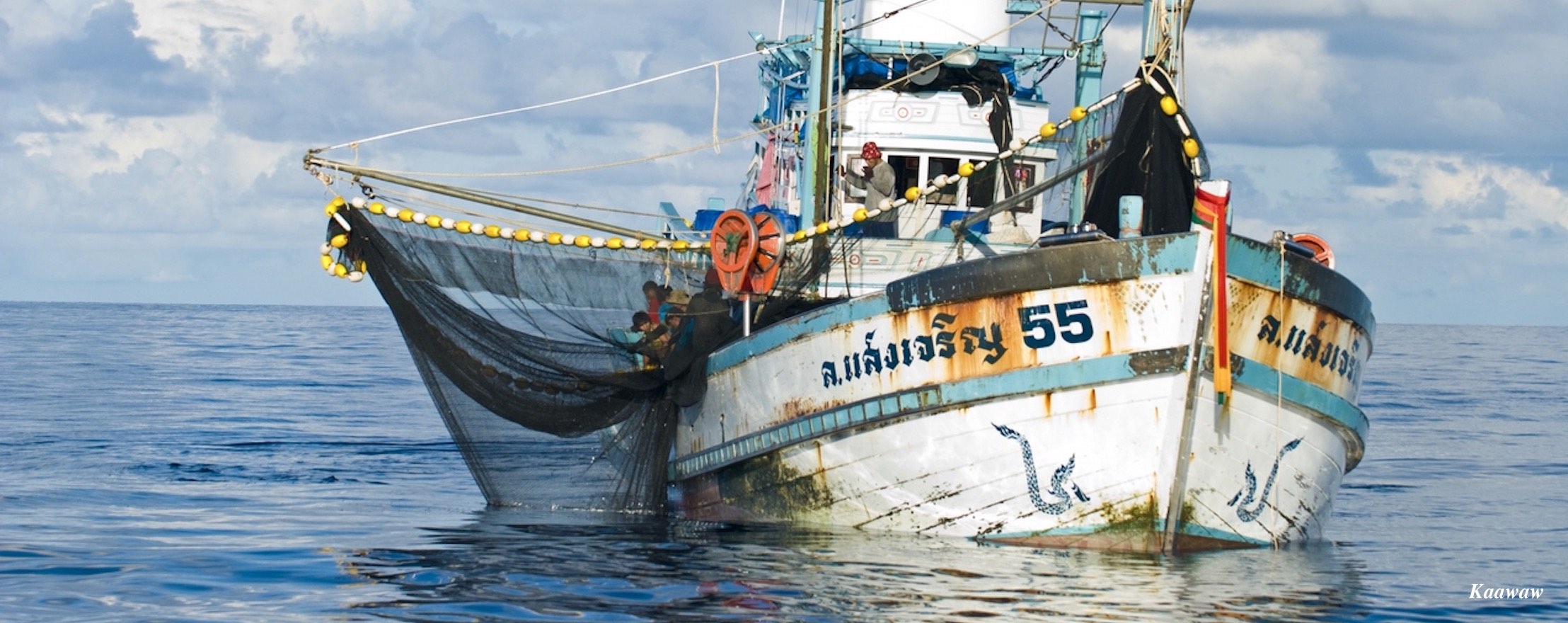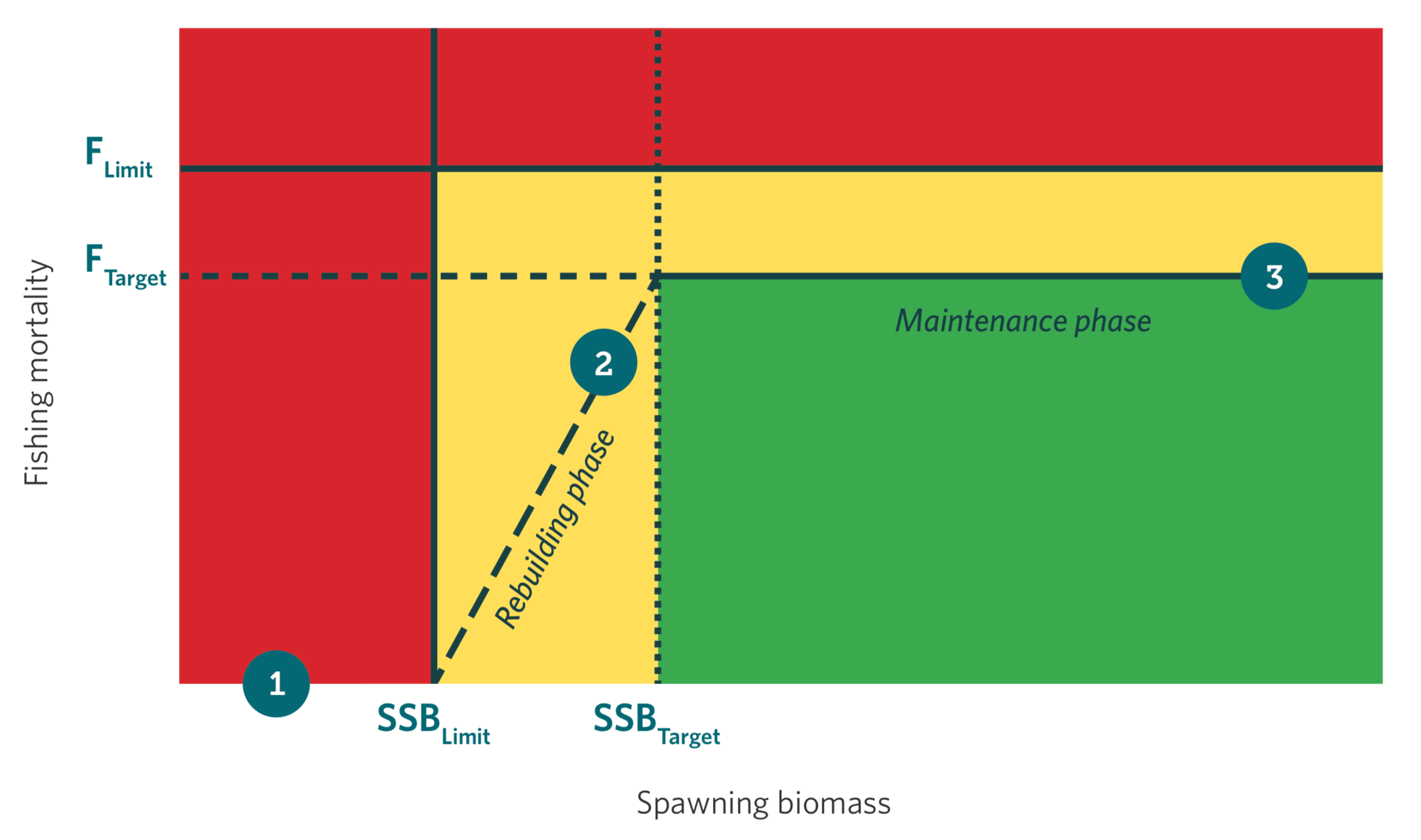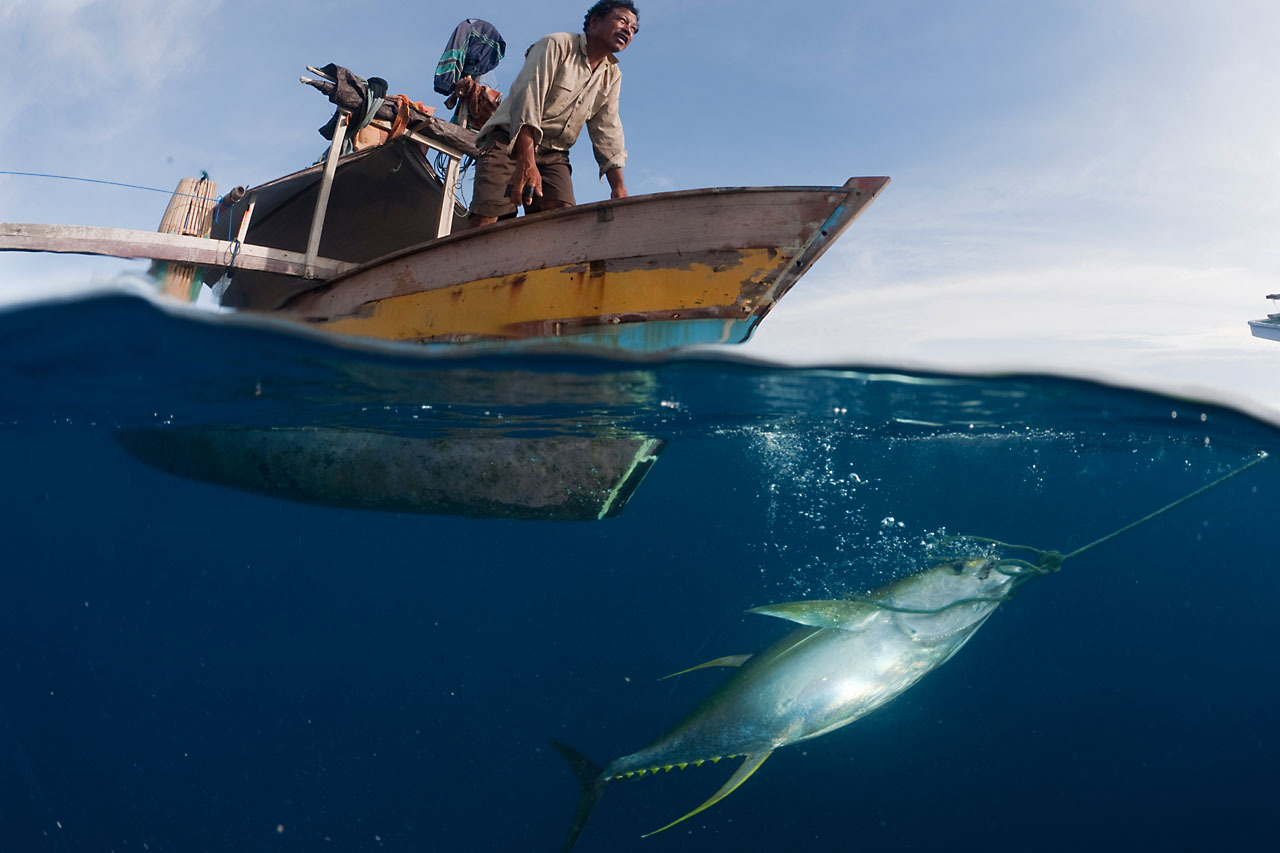
Harvest control rules (HCRs) are the operational component of a harvest strategy, essentially pre-agreed guidelines that determine how much fishing can take place, based on indicators of the targeted stock’s status. HCRs range from basic, constant catch strategies—under which catch levels do not change—to complicated, multistep rules that set allowable catch based on triggers.
Empirical HCRs: Indicators on which fishing opportunities are set come from one or more direct measures of stock status, such as:
Model-based HCRs: Indicators are based on models, such as:
Stock status can be represented graphically by what is known as a Kobe plot. The example below shows a basic HCR. The fishery’s ideal state is green, its cautionary state is yellow, and the state to avoid is red. The HCR has the following specifications:

Ⓒ 2016 The Pew Charitable Trusts
FACTSHEET: Harvest Control Rules; Language Options: Español 🇪🇸 • Français 🇫🇷 • 日本 🇯🇵 • ไทย 🇹🇭
‼️ Webinar Alert ‼️ Join us and our partners on Thursday, October 24th, at 14:00 ET / 20:00 CET / 06:00 Pohnpei for a deep dive into Management Procedures for Small Tunas! 🐟🌍
‼️ Webinar Alert ‼️ Join us and our partners on Thursday, October 24th, at 14:00 ET / 20:00 CET / 06:00 Pohnpei for a deep dive into Management Procedures for Small Tunas! 🐟🌍
🌊 Two RFMO meetings, one critical opportunity! 🦑 Pacific squids play a key role in marine ecosystems and economies. It's time for SPRFMO & NPFC to lead by committing to MPs that ensure a sustainable future. Learn more in our latest blog!

May 3, 2024
harveststrategies.org serves as a resource for fisheries scientists, managers, and other stakeholders, compiling information about how harvest strategies work and how implementing this pioneering management approach can lead to sustainable, profitable fisheries and successful recovery programs for many species around the world. The site is managed by The Ocean Foundation’s International Fisheries Conservation Project with support from The Pew Charitable Trusts and the Common Oceans Tuna Fisheries Project, which is funded by GEF and implemented by FAO.